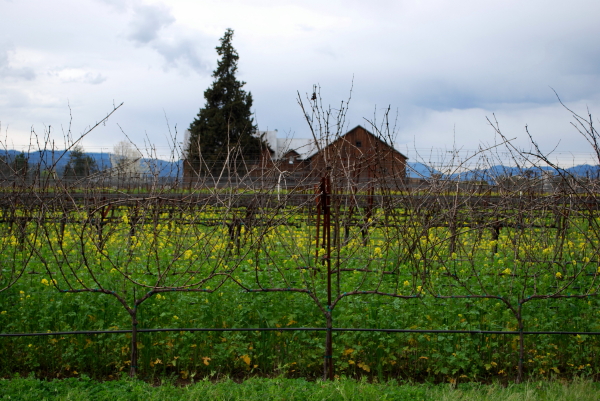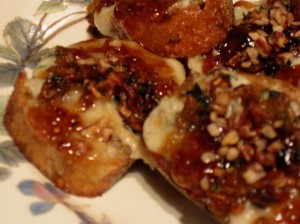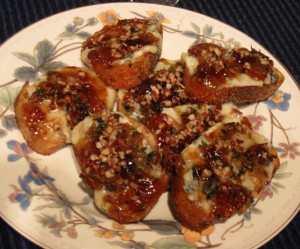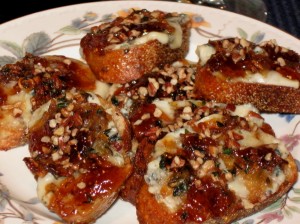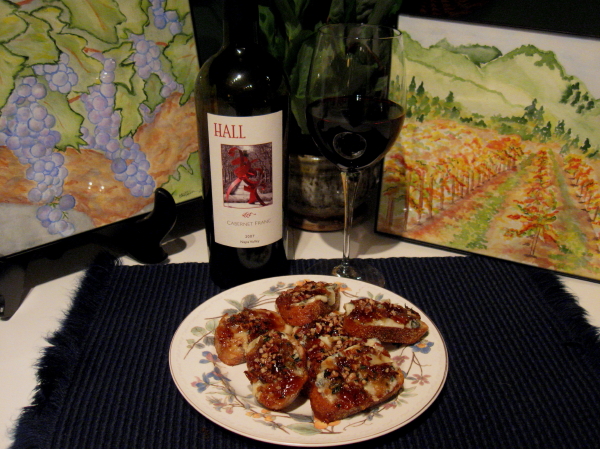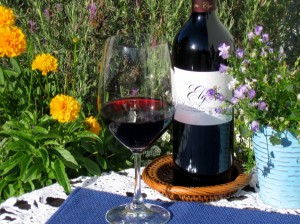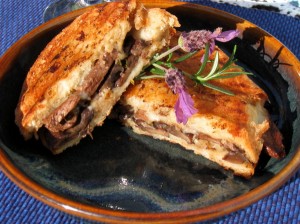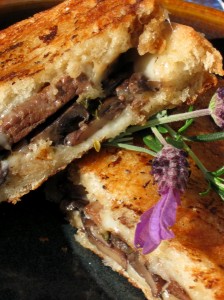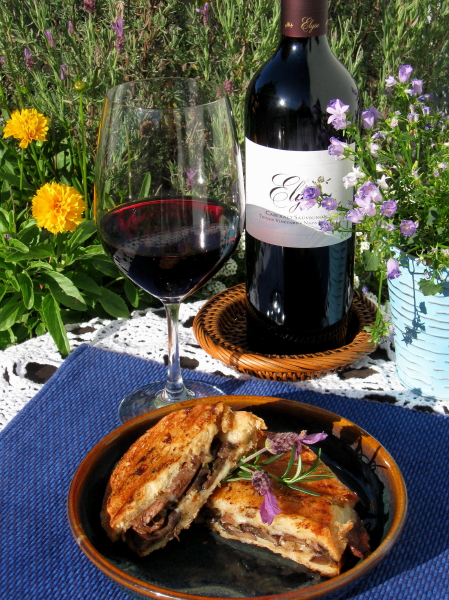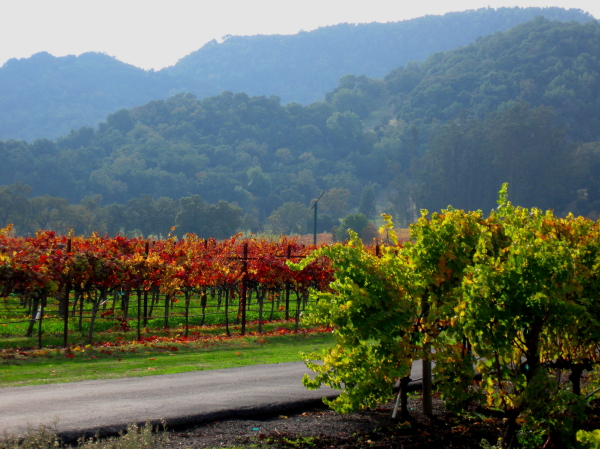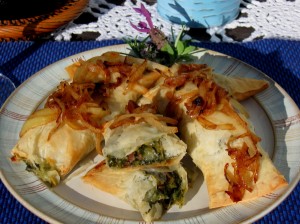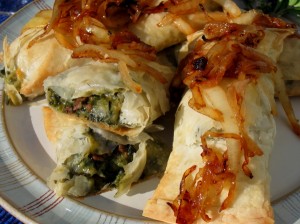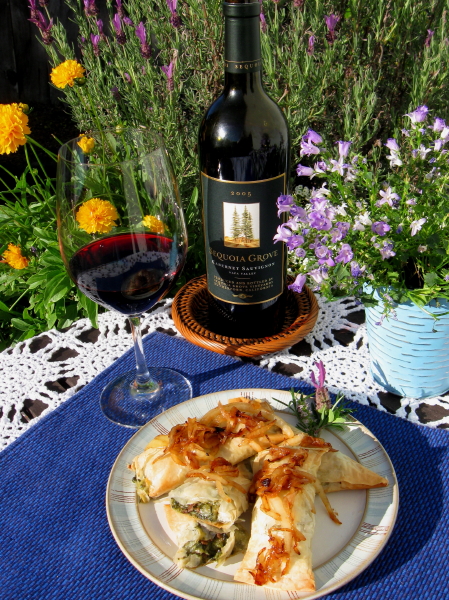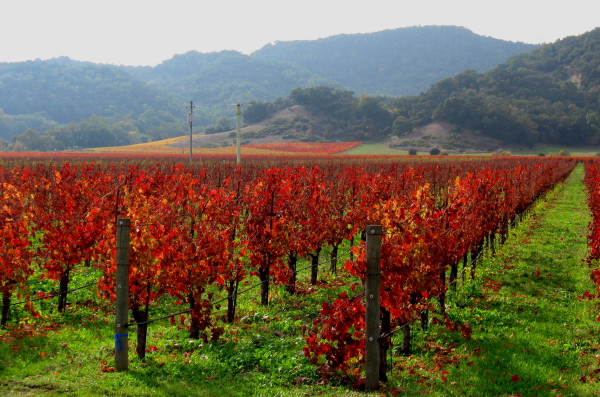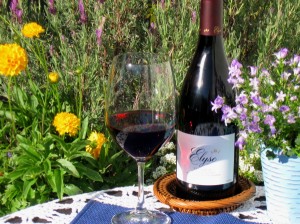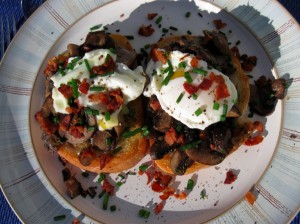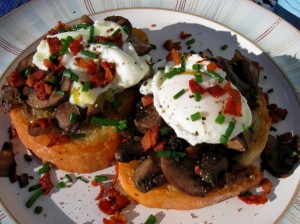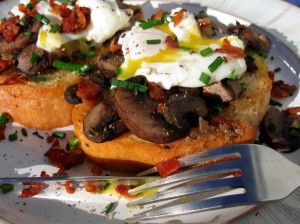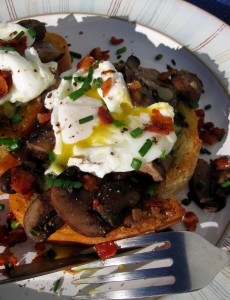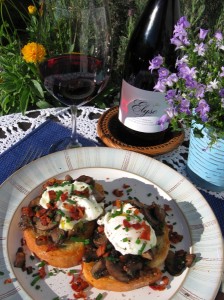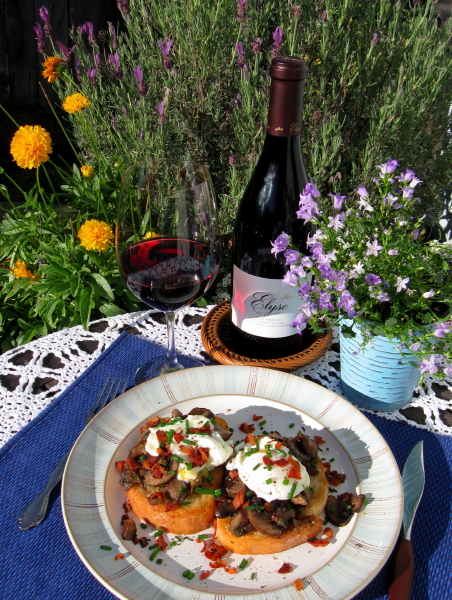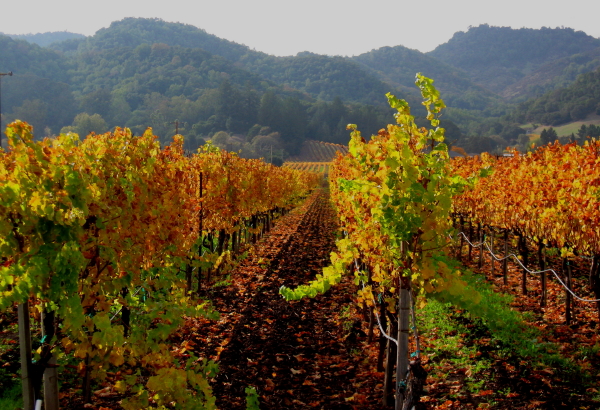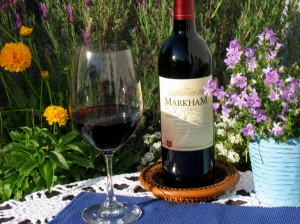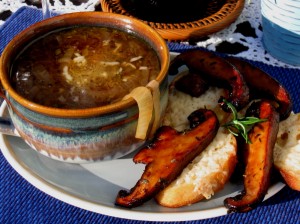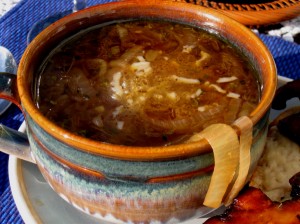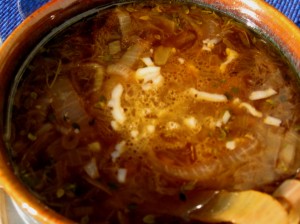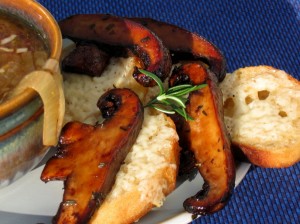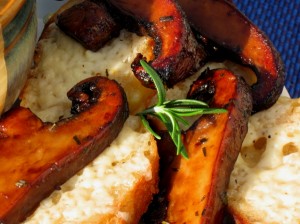Feb 22 2012
Simply Satisfying
Cabernet Franc is a varietal which some may know, some may not know; some may pass over, and some may smartly cherish.
Often found as a blending grape in well-know Cabernet Sauvignon wines, from time to time when a winery has exceptional fruit and/or an exceptional year, Cabernet Franc will be bottled as a stand-alone single varietal. For those in possession of Cabernet France single varietal 2007 vintages, you know that a good thing is waiting in your wine cellar.
It is not a surprise that a winery such as Hall Winery (“Hall”, which is known for its prowess in Cabernet Sauvignon) would also excel with a single varietal bottling of Cabernet Franc. Obtained from the winery nearly a year ago, I have allowed the 2007 Cabernet Franc to continue to sit and rest. Opening it this past week proved that a year’s worth of waiting was well worth the effort.
While many other Cabernet Franc wines may be an almost red cherry color, Hall’s 2007 Cabernet Franc sends a message that it is a serious contender from its dark, almost eggplant coloring. While admiring the wine’s coloring, the nose is seduced by predominate aromas of black cherry and French vanilla, accompanied by gentle comforting aromas of anise and a subtle hint of eucalyptus. Not to be disappointed, the wine is deliciously smooth and caressingly soft on the palate as it slips past as smooth as a kitten’s purr. The longer that the wine is allowed to either decant or open up in the glass, the wine’s flavor profile and texture deepens. Black cherry, which is rich enough to fool the senses into thinking that cherry season is right around the corner, rolls across the palate from front to back. Leveling out the mid-palate are pleasant flavors of fennel.
Tannins are present to give a simple elegant sense of structure and reminds oneself how Cabernet Franc can emerge at fine dining; although, pairing should be conscientious as Cabernet Franc could be overwhelmed by heavy main courses but fairs wonderfully with earlier courses, including appetizers.
The other day while reading I came across a foreword written by Thomas Keller that succinctly captures much of the premise of my wine and food pairings, “Deep inside, all of us feel a need for food that nourishes both body and soul, but for many of us this awareness may lie dormant for years until we come face-to-face with what we’ve been missing.” Many people have often admitted to me that pairing wine with food can be daunting and particularly when left to their own devices in their home kitchens. Most know rule of thumb pairings with protein regarding red or white wines, but as familiarity wanes, often a good rule of thumb is to remember where certain grapes grow best and think of regional cuisine from same area. In this respect, Cabernet Franc often finds its true sense of home with ingredients from the Bordeaux region of France or similarly, from Northern California.
With this in mind, this week’s menu simply hosts:
~ Gorgonzola Fig Pecan Multigrain Crostini.
To commence, find a true hearty multigrain baguette freshly baked at your favorite local shop. When you leave the store, the baguette should be tormenting your senses with its rich earthy aroma (which is a good sign of a true medley of grains having been used).
Next, shallots are thinly sliced and slowly caramelized with chopped fresh thyme. Slices of the baguette are lightly topped with a bit of butter before placing a thin slice of gorgonzola cheese on top and dressing with the shallots. Adding a dollop of fig preserves next and decorating with chopped pecans, these anticipated sinful bites are popped into the oven to warm and melt.
Emerging bubbling from the oven, these delights are rich, rustic and savory. They serve as a perfect prelude to a simple braised steak with mushrooms. When paired with the wine the combination is intuitively mesmerizing. Hall’s 2007 Cabernet Franc can romance even a skeptical palate to an enamored frenzy and it is easy to linger over such an appetizer as each savory bite intuitively ties to the wine. It is a balanced harmony of earthy, rustic, sweet and mildly biting flavors, which layer to create a subtle complexity that does not clash with the simple elegant of Cabernet Franc.
If you are looking for a full meal plan, consider following with a simple salad of microgreens with fresh raspberries and thinly shaved fennel. If you are entertaining, dig out the hot pot and sear slices of fresh steak while you continue to linger over such courses, good conversation and wine. It is in moments such as these that you find yourself lingering and simply satisfied, suitably culturally in line with “joie de vivre”.
Comments Off on Simply Satisfying
